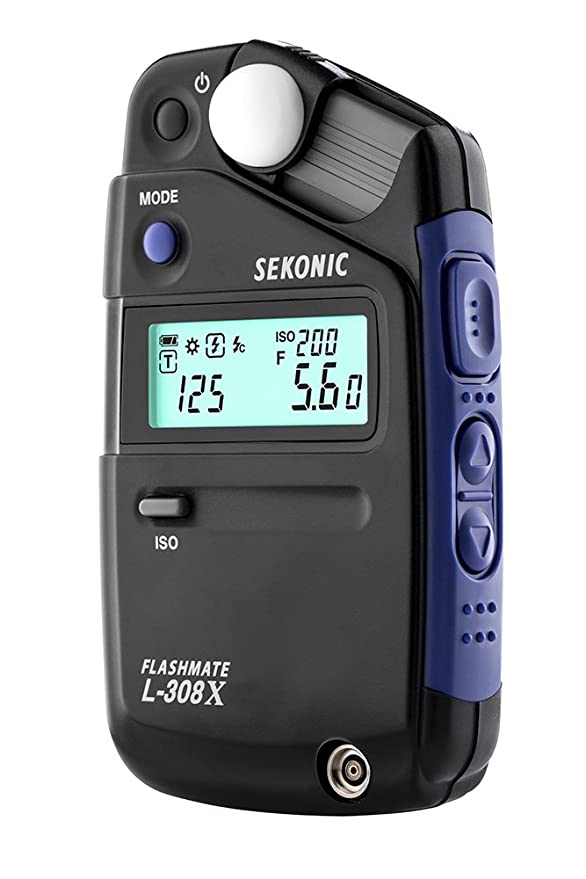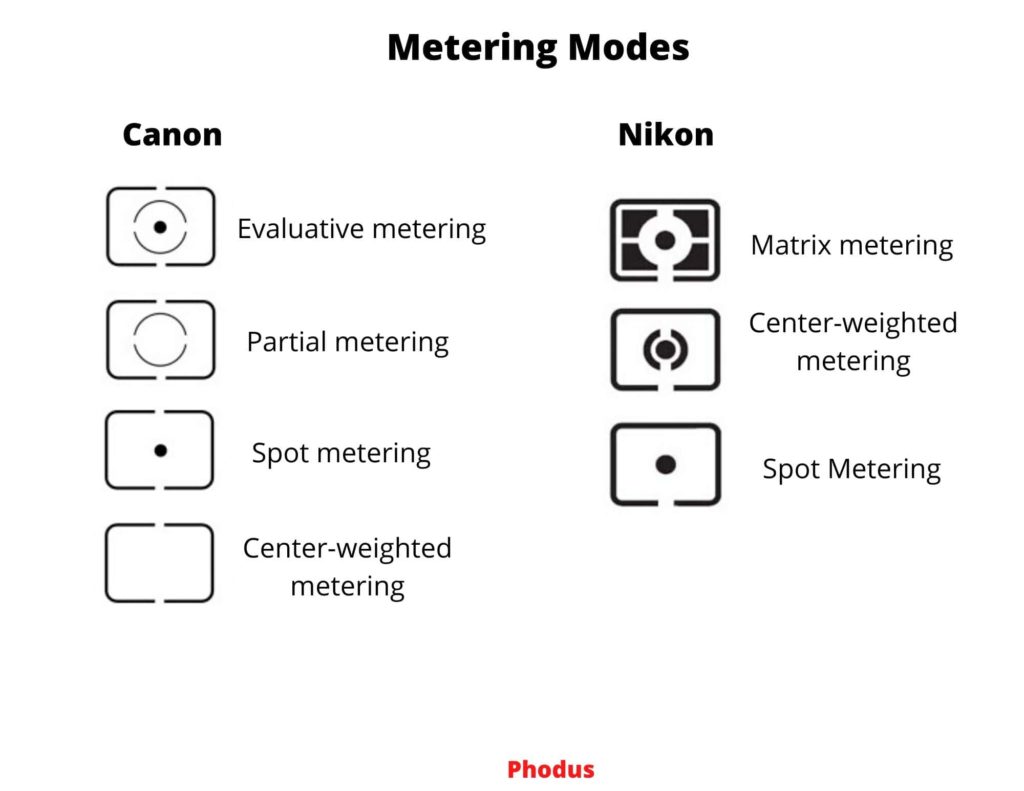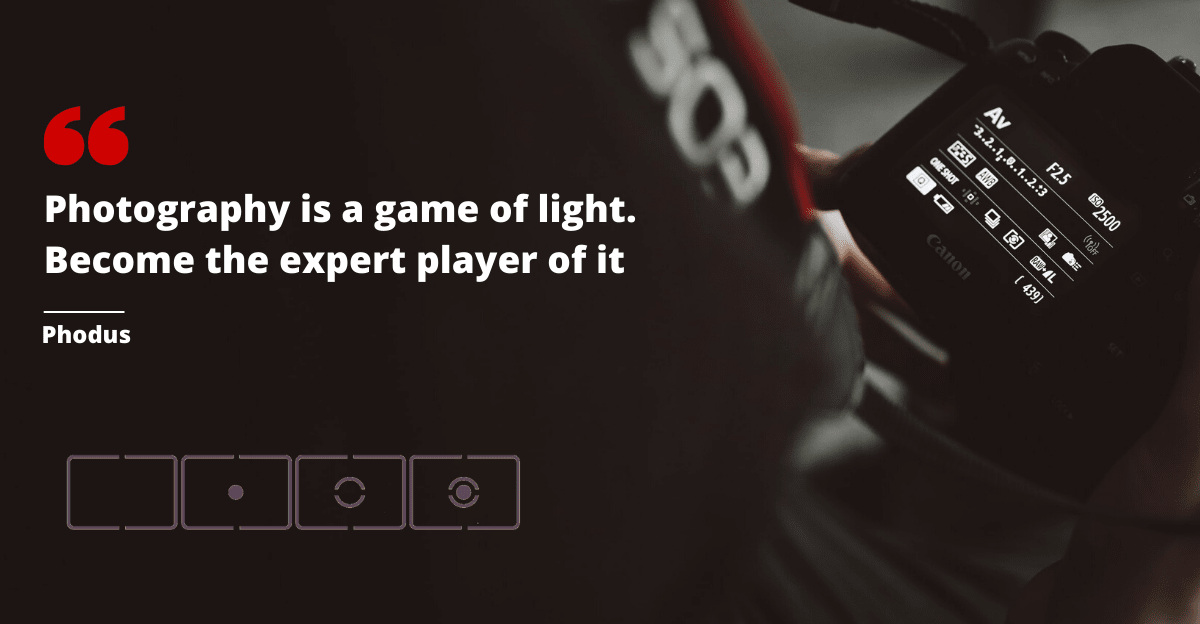What Is Metering Modes In Photography?
Metering modes in photography helps you to understand the light in your scene. Which further determines how well your picture is exposed. Shutter Speed, Aperture, and ISO are known as the Exposure triangle adjusts the light after analysing it.
You have heard it as “Camera meter, “Metering modes” or even “Metering”. All are the same things in photography.
Here in this article, you will learn about it and its types and also how to use it.
Let’s dive in
What is metering?
Metering simply means “measuring the light of the photographing scene”. It is measured with the light meters. Once it is measured you control it through the exposure setting to get the correct exposure.
It happens to every beginner photographer as it happened to me. Before clicking the picture we generally check the lighting condition of the location. With our naked eyes.
According to that we do our camera setting. To get the required images. But do you know? DSLR these days tells you if the picture gets over or underexposed.
Nowadays metering is available to tell you the light condition.
There are two types of light meters
- Incident light meter
- Reflected light meter
Incident Light meter
It measures the light from the direct source of the light available in the shooting frame.

Back then, when there was a film camera. It was very sensitive to use the light meter. As if you missed the analysis of the correct lighting condition. You may end up with an over or underexposed image.
As it was a film camera no second option to fix it up after clicking. That was the time when photographers used incident light meters.
It’s a light metering equipment that tells the light condition of the scene. Nowadays also many photographers use light meters to get a more accurate exposure.
Reflected light meter
This light Meters measure the reflected source of light. In DSLR we have reflected light meters. Which calculates the reflected light from the subjects passing through the lens to the light meter.
You have often heard the word “TTL” mentioned in your camera. Inbuilt TTL light meter.
What is the Metering mode?
Metering mode is the reflected light meter to measure the light. There is the light meter available on your camera. That is categorized into different modes. Each mode has a specific role to capture images. These modes help you to identify light in different conditions.

Metering modes allow you to focus on the specific area of the frame. Where you can control the exposure.
Let’s check out the types of metering modes available on your camera.
Types of metering modes
- Center-weighted metering mode
- Evaluative metering mode
- Spot metering mode
- Partial metering mode
Center-weighted metering mode
In this metering mode the light sensor considers the center of the frame to measure the light. And its surroundings also. The other parts of the frame are not bothered.
You can also see this in the viewfinder after selecting this mode in your camera. This evaluates around 60 to 70 % of the center area.
At these points the focus is set to the middle of the camera. But the focus point doesn’t need to be only in the center. You can change the focus point but the light will be weighted from the middle of the frame only.
The best situation for selecting this mode is when your subject is in the center of the frame. Sometimes when you want to have control over the light in the center. Even if the subject is somewhere else in the frame.
For example while taking portraits or headshots. This mode will also work pretty well when the subject is in the middle. And there is too much backlight in the background. You can either create a silhouette or make the face look well exposed. And the background will get overexposed.
Evaluative metering mode
These modes have many names but make no difference in character. All are the same, it’s the company and manufacturer that has decided their name.
“Evaluative metering” is named by Canon. “Matrix metering” is named by Nikon, “Multi-segment metering” is called by Sony and Pentax. “Digital ESP metering” is termed by Olympus.
This metering mode divides the scene into multiple zones. And evaluates each area to collect light information from the highlight and the shadows. It takes the average value from that information to get the required exposure.
Let’s understand this way. It considers the entire frame. And Then collects the lights from the specific zones. That depends upon factors like (the bright part, the dark part, color, distance, subject, etc). After collecting the light, it takes the average of all the information. To produce a correct exposure image.
A focus point is also one of the factors in this metering.
After collecting all the information, the camera gives preference to the focus point to evaluate the exposure. But this depends on the camera. As many cameras do not have multiple focus points.
This metering usually performs very well and produces proper exposure. That’s the reason it is the default setting in most of the cameras.
This mode is best for situations where the light condition is even in the entire frame. Like landscape photography. It works pretty well in golden hours also.
Most of the photographers use this mode to get the correct exposure in their images.
Spot Metering Mode
The metering mode evaluates light from a small portion of the frame. It is placed where the focus point is and that specific small area it exposed. It generally covers less than 5% of the frame.
In a few cameras the spot is fixed and it doesn’t move with the focus point.
Spot metering is best for photographing. when you want to put the focus on a specific portion of the frame.
For example Bird photography in which the bird covers a very small portion of the frame. The focus point is on the bird and this mode evaluates light from there only. Leaves the rest of the part unnoticed.
The result is the bird looks sharp and with proper brightness. The rest of the portion gets blurred, overexposed, or underexposed. That depends upon your exposure settings.
It works well when you are shooting a subject with a bright background. The subject is very small, say a model’s face. The focus is on the model face to control the exposure on that portion only. Avoiding the backgrounds and other parts of the frame.
Another best example while capturing candid shots in wedding photography. Where you want to focus is on the subject’s face for proper exposure. Where the rest of the frame gets ignored.
Partial Metering Modes
This mode is somewhere simpler to spot metering. Where the focus is in the small portion of the frame to get the exposure in that area only. The difference is the amount of area, spot covers from 3 -5% area of the frame.
Whereas partial cover 10% area of the frame to get evaluated. This is best for wildlife photography like capturing birds and animals as they take small areas of the frame.
Why is metering important in photography?
Till now you must have understood the importance of metering in your camera. Let’s check out a few of them:
- It helps to evaluate the light condition of the scene.
- It helps to set the correct exposure setting.
- It allows us to evaluate a specific area of the frame, even a very small area of the frame.
- The light meters are inbuilt in the camera to help you with the lighting condition.
- The metering weighs the lights and you set the exposure according to your image needs.
- Unpredictable lighting conditions are controlled by the light meter. Like street photography and wedding photography.
Where to find the metering modes in your camera?
Every digital camera has a different meter setting. It depends on the companies. Like in canon. You will find a button near the above display or on the back screen. Inside the menu setting.
If You didn’t find it. Please check your camera’s user manual to guide.
When to use the metering modes?
The evaluative mode is set as a default mode in your camera. You can change it according to your needs and light conditions.
If you’re shooting a portraits, spot or partial metering mode is the best mode. As you want the focus on the face of the subjects.
The evaluative mode works in maximum types of situations but it is best for evenly light conditions. Like landscape photography, sunset, or in golden hours photography.
The center-weighted mode is best when the subject is in the middle of the frame and its surrounding. Like portraits with backgrounds in the frame. Street photography where the focus is in the center only
What is the best Metering Mode?
There is no such best metering mode as it all depends on the light condition of the scene. But as evaluative modes give the average weight to the entire frame. It is comfortable in most situations.
So you can say the best metering modes as it is used most of the time and by most of the photographers in the world.
As a beginner you will be using these modes only as it is the default mode in the cameras.
But don’t stick to this mode only. Practice with some other modes too. It will help you to understand the light for the best exposure.
Conclusion
So now that you know about metering modes in photography. It’s your time to show the result. Go get your camera. Start practicing all the modes in different photography conditions.
If you have any questions in your mind you can mail me. Or comment below I would love to hear it from you.
To summarize it. You have learned the following things in this blog post.
- Metering modes
- Types of metering modes
- When to use?
- How to use it?
- Where to find it on your camera?
If your are a beginner photographer and looking for some photography guides. Here it is have a look.
And also if as a beginner want to excel in photography check this out.
If you want global exposure as a photographer. Then check out .

